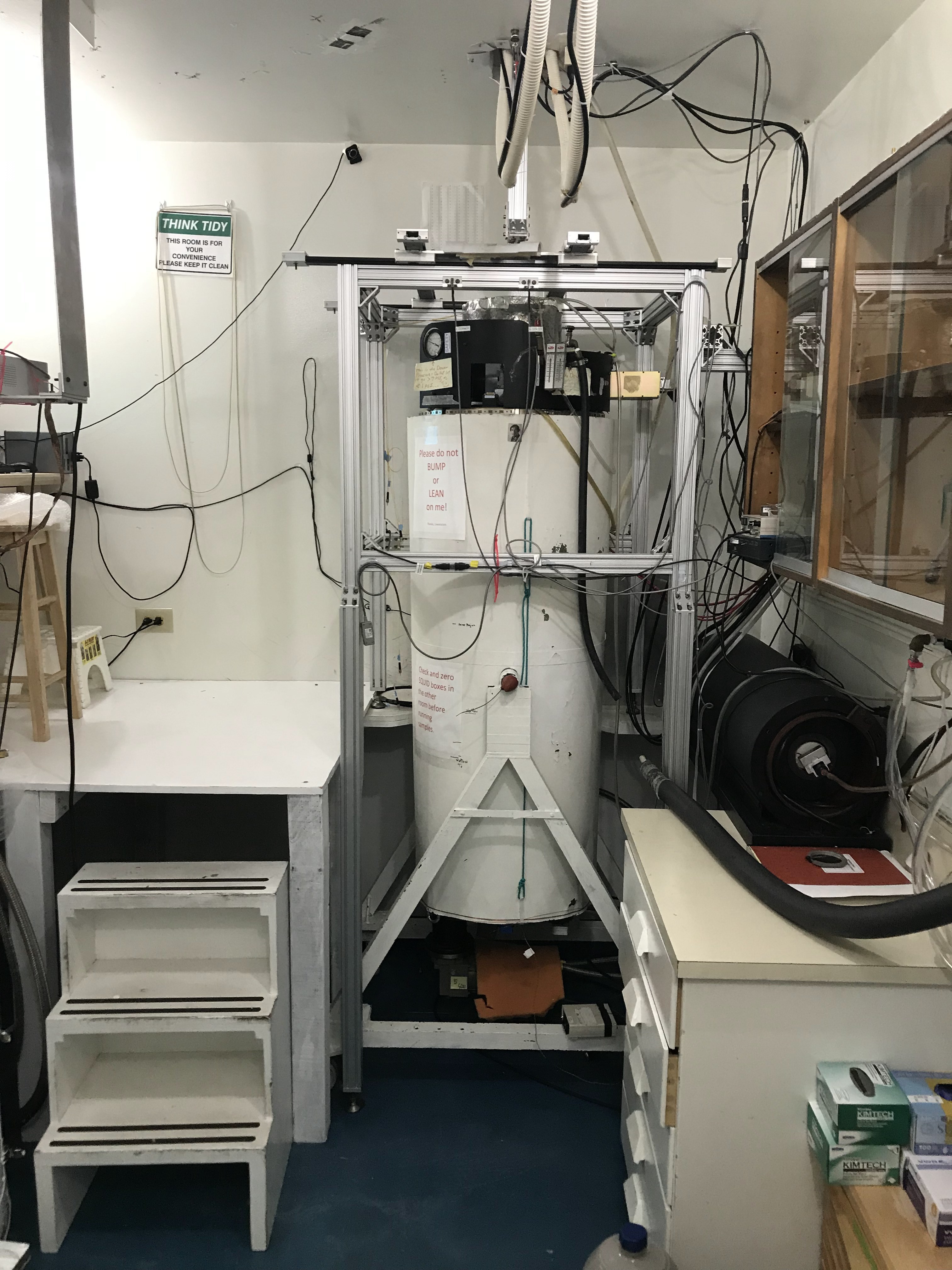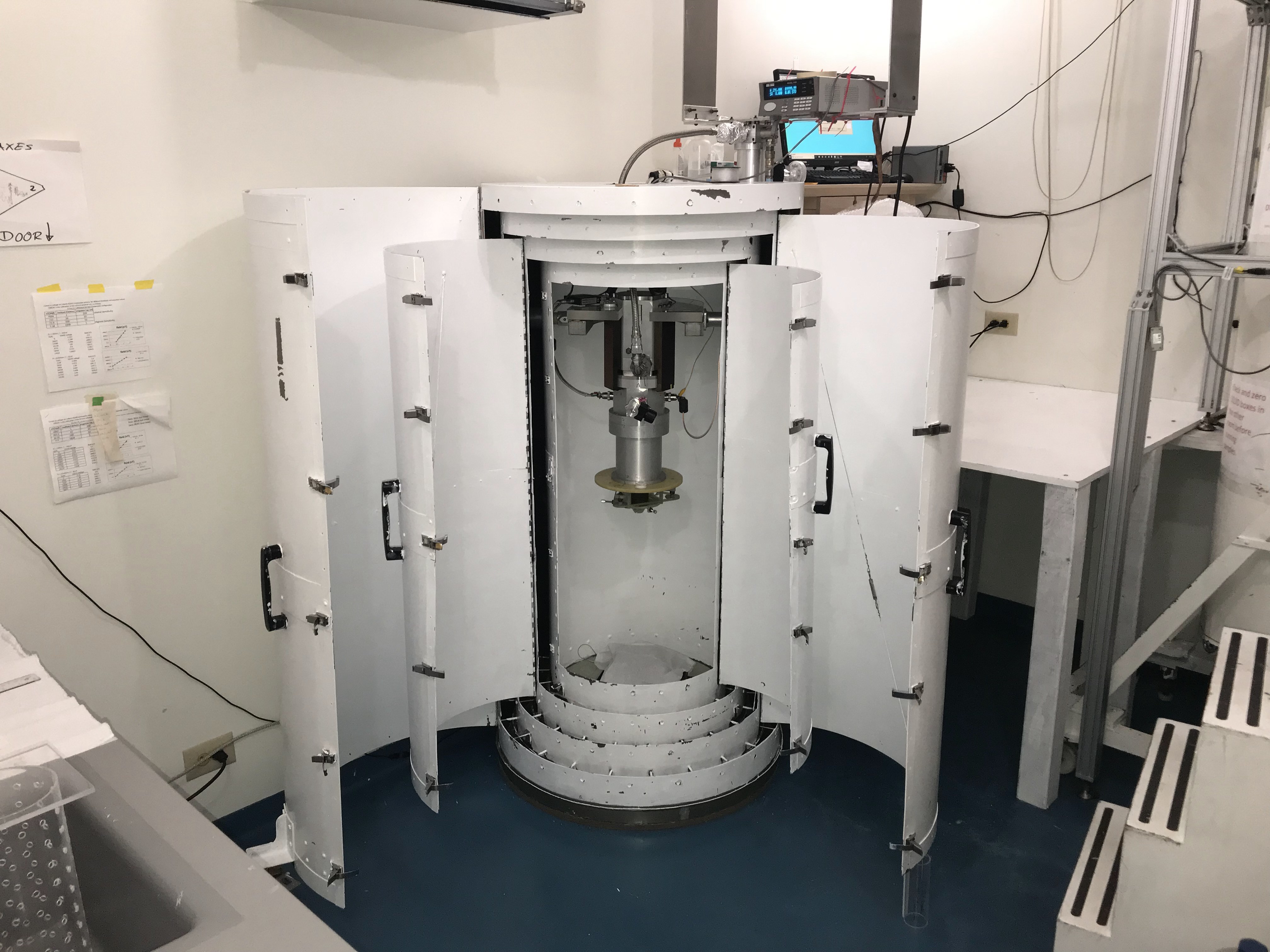Paleomagnetic’s Laboratory


Both of the 2G Enterprises SQuID magnetometers have an integrated in-line computer-controlled pulse magnetizer, an ARM acquisition system, and the 2G/Applied Physics alternating field demagnetization unit. The total setup thereby allows fully automated rock magnetic measurements to be made such as AF demagnetization, IRM acquisition and demagnetization (AF), ARM acquisition and demagnetization, rotational remanent magnetization (RRM) and demagnetization, and backfield IRM acquisition and demagnetization. User inputs for number of steps can change sample measurement time, but a complete IRM acquisition and AF demagnetization cycle of 30 measurements takes ~30 minutes. Plotting and analysis of rock magnetic experiments is performed using the RAPID MatlabTM scripts. In-line susceptibility bridges also allow susceptibility measurements to be made on each sample run using the magnetometers. For more detailed susceptibility measurements, the laboratory has an AGICO MFK1-FA KappaBridge with rotator, cryostat and furnace attachments for partially automated measurements of anisotropy of magnetic susceptibility and fully automated low-temperature and high-temperature susceptibility measurements. Other supplies and equipment in Professor Kirschvink’s paleomagnetics lab include liquid nitrogen for low-temperature cycling, hall probes, portable fluxgates, and pass-through susceptibility bridges.
The controlling hardware and software for the 2G SQuID magnetometer is currently being upgraded to improve the system’s performance, flexibility, and user interface. The next generation of controlling software will be moved from Visual Basic to C#. Work is being done on the hardware and software of the magnetically shielded ASC furnace to add additional thermocouples for extra precision in thermal measurements. Lastly, the lab has experimented in using gallium in the cryocooler system of the 2G SQuID magnetometers to allow more efficient cooling and reduce liquid helium consumption (e.g. Kirschvink, GP13A-1380 abstract, AGU Fall Meeting 2015).

The larger shielded room in Caltech’s Paleomagnetics Laboratory also houses an Ultra-High Resolution Scanning SQuID Microscope, developed in the Kirschvink Laboratory, can map the vertical component of the magnetic field above room temperature samples using an automated xy nanostage. Housed in an additional 4 layers of mu-metal shields, it has a sensitivity of 10-16 Am2 and a spatial resolution down to 40 μm. Although utilized for rock magnetic applications as well, through software and procedures developed with collaborators at MIT and Harvard, the magnetic moment can be calculated from very weak magnetic samples to address paleomagnetic questions.
The 9m x 3m x 3m shielded room is an epoxy-sealed dust and particle-free clean laboratory maintained under positive pressure with a deionized water shower entryway and includes distilled-water sink. This allows magnetic measurements of weak biological samples on the 2G SQuID magnetometer as well as the Ultra-High Resolution Scanning SQuID Microscope. The laboratory also has a fume hood and an optical microscope to help biological analyses and experiments.